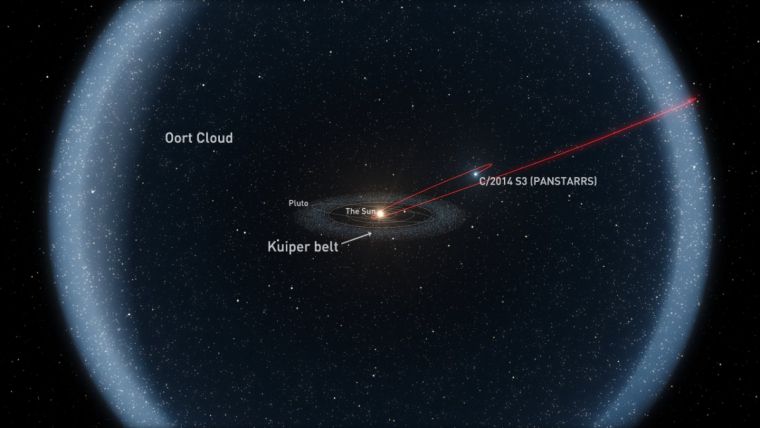Newly discovered tailless rocky comet can give clues as to how Earth was formed

When we think of comets, we usually picture a piece of rock with a fiery tail of light. Astronomers, however, recently discovered a comet that breaks this mould.
Using the Pan-STARRS telescope in Hawaii, a team of space scientists has discovered a comet that does not have any tail.
This unique space rock, known as "S3" for short, is a little more than twice as far away from the sun as the Earth is, and is said to be 100,000 times less active than typical comets.
What makes the S3 comet more extraordinary is the fact that it seems to be not rich in ice, unlike other space rocks. This explains the comet's low activity while approaching the sun. Ice-rich space rocks typically get fired up as it gets closer to the sun.
"We've found the first rocky comet," study co-author Olivier Hainaut, an astronomer at the European Southern Observatory in Garching, Germany, said in a statement, as quoted by Space.com.
This newly discovered tailless comet is significant because it may provide clues as to how the Earth was formed. The S3 comet's lack of ice suggests that it came from the inner solar system.
"It is very exciting — S3 would have been kicked out while the Earth was being formed, possibly even by the early-days Earth," Hainaut told Space.com. "S3 would then be a planetesimal like those which formed the Earth, but preserved since that time in the cold of outer space."
In a separate statement, study lead author Karen Meech of the University of Hawaii likened the S3 comet to an "uncooked asteroid."
"We already knew of many asteroids, but they have all been baked by billions of years near the sun. This one is the first uncooked asteroid we could observe — it has been preserved in the best freezer there is," Meech said, as quoted by Space.com.











